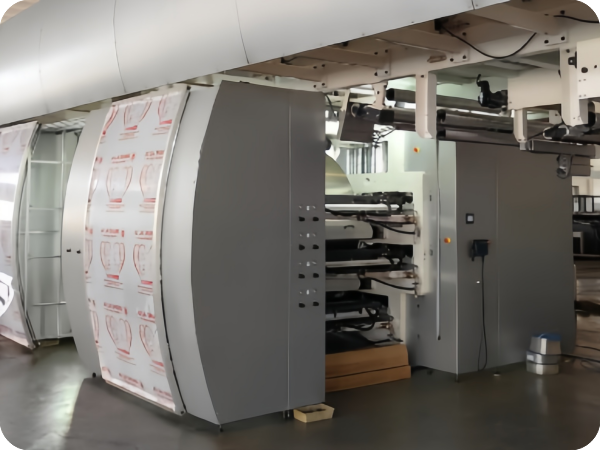Satellite flexographic printing presses are top-of-the-line models in the printing of flexible packaging, labels, and films. All their features stem from their unique "satellite" structure—all color printing units are arranged around a shared, large central impression cylinder.
I. Features
1. Unique Structure: Central Impression Cylinder
This is the most fundamental feature of the satellite structure. All color printing cylinders transfer the image to the substrate, which remains in close contact with the surface of a large central impression cylinder.
2. Wide Range of Substrate Applications
Especially adept at printing on extremely thin, easily stretchable, and smooth films such as PE, PP, BOPP, and PET. Also suitable for paper and self-adhesive labels.
3. Short Ink Path System
Typically equipped with ceramic anilox rollers and a closed doctor blade inking system, it precisely controls ink volume, ensuring stable and uniform ink transfer, laying the foundation for high-quality printing.
4. Commonly Equipped with UV or EB Curing Systems
To adapt to high-speed printing, satellite flexographic presses generally use instant-curing UV inks or electron beam (EB) inks, combined with UV lamps installed around the central cylinder, enabling instant drying and preventing back-side smudging.
II. Advantages
1. Extremely High Registration Accuracy
This is its most prominent advantage. Because the substrate remains in close contact with the large central impression cylinder, the material travels a very short and stable path from the first color to the last, with minimal tension variations and lateral drift. This fundamentally solves the registration problem caused by the stretching and deformation of thin, soft materials during printing, making it particularly suitable for products with extremely high registration requirements, such as fine labels and high-definition flexible packaging.
2. High Printing Speed and Production Efficiency
The stable paper path and efficient instant drying system enable satellite flexographic printing presses to achieve extremely high printing speeds. Modern satellite presses typically reach speeds of 300-500 meters per minute or more, far exceeding those of modular flexographic presses, making them particularly suitable for large-volume production.
3. Simple Operation, Low Scrap Rate
After completing the registration pre-setting before startup, only minor adjustments are needed during actual printing to achieve precise registration, greatly reducing debugging time and material waste.
Because the material is "wrapped" in the central cylinder, it is less prone to wrinkles and lateral swaying, further reducing the scrap rate during production.
4. Excellent Substrate Adaptability
For highly stretchable plastic films (such as cling film, sanitary packaging film, etc.), the satellite structure is almost the only solution that can guarantee stable, high-quality printing. It effectively controls material tension, preventing deformation during long-distance travel between multiple printing units.
5. Stable and Exquisite Print Quality
The short ink path + closed doctor blade system ensures uniform and stable ink application.
High registration accuracy is the foundation for achieving high-definition dots, delicate tones, and vibrant colors. This makes the quality of modern satellite flexographic printing comparable to or even surpassing traditional gravure printing.



